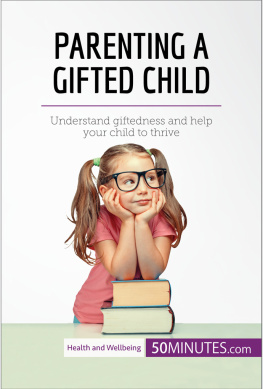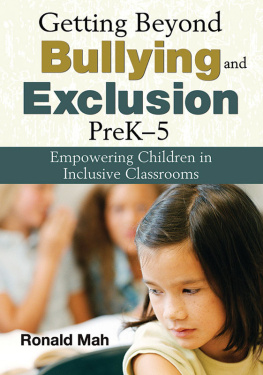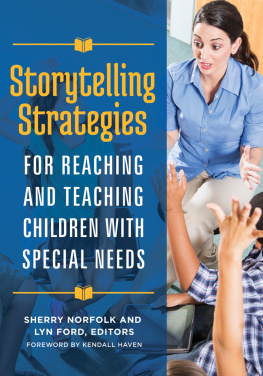First published 2015
by Routledge
2 Park Square, Milton Park, Abingdon, Oxon OX14 4RN
and by Routledge
711 Third Avenue, New York, NY 10017
Routledge is an imprint of the Taylor & Francis Group, an informa business
2015 Diane Montgomery
The right of Diane Montgomery to be identified as author of this work has been asserted by her in accordance with sections 77 and 78 of the Copyright, Designs and Patents Act 1988.
All rights reserved. No part of this book may be reprinted or reproduced or utilised in any form or by any electronic, mechanical, or other means, now known or hereafter invented, including photocopying and recording, or in any information storage or retrieval system, without permission in writing from the publishers.
Trademark notice: Product or corporate names may be trademarks or registered trademarks, and are used only for identification and explanation without intent to infringe.
British Library Cataloguing in Publication Data
A catalogue record for this book is available from the British Library
Library of Congress Cataloging-in-Publication Data
Montgomery, Diane.
Teaching gifted children with special educational needs : supporting
dual and multiple exceptionality / Diane Montgomery.
pages cm
Includes bibliographical references and index.
1. Gifted childrenEducationGreat Britain. 2. Children with
disabilitiesEducationGreat Britain. I. Title.
LC3997.G7M654 2015
371.950941dc23
2014047178
ISBN: 978-1-138-89055-8 (hbk)
ISBN: 978-1-138-89057-2 (pbk)
ISBN: 978-1-315-71232-1 (ebk)
Typeset in Galliard
by Deer Park Productions

This book is written for teachers, students of education and interested others. It is based upon principles derived from a career in teaching, teacher education and research. The main themes are:
The teacher is the key : The only effect size of any significance to emerge from meta analyses of research has been the quality of teaching.
Excellence for all children : No system of selection, pull-out programmes, acceleration and special provision finds and meets the needs of all our gifted and talented children or those with special needs. Only the selected few gain access to it and sometimes the provision is special only in name. Thus the regular teacher is the key to providing for all childrens needs and drawing on resources and specialists to help. It is the right of every child to have the best there is.
Teaching is a complex profession : Teachers do not teach subjects; they teach children to learn subjects. This involves acquiring sets of higher order academic and professional skills, not just relating subject knowledge. Telling is not teaching.
Learning should be developmentally appropriate : Childrens learning needs change as they develop and methods employed with adults are not appropriate for children. Concept development and acquisition stages require different methods of teaching and learning from the concept attainment phases of the later years.
Lifelong learning : Teachers creativity needs to be released to enable them to develop pupils as self-organised and lifelong learners. They need to make learning interesting and fun.

Figure 0.1 A focus on learner needs
The teacher-researcher : Because of the vast knowledge base that now exists about education, teachers have to become learners and researchers in their own classrooms to find what works best and to develop their personal theory and practice of teaching. It made sense in an era when much less was known about teaching and it makes sense now when there is an overwhelming body of knowledge to select from.
Continuing professional development
Continuing professional development (CPD) is essential to build teacher knowledge and improve professional practice. Two things to do on Monday morning has become a popular mantra at CPD courses but the effects soon disappear. Practice without theory is blind. The most effective methods for developing professional knowledge and skills are longer courses where shared ideas can be taken back to classrooms and verified or otherwise. Programmes of constructive self-organised learning can also be effective.
Terminology
In the UK and USA there is a tension between individual pathology models and ecological models in special educational needs (SEN). A major site for this conflict is in education. In Britain there is a resistance to medicalise conditions to avoid the negative consequences of placing emphasis on deficits rather than educational needs.
In the US the normalisation of medical labels to explain educational difficulties occurs because the legislation does not permit access to special services or resources without it. This makes the concept less threatening to their practitioners and the general population.
The hesitation to medicalise conditions is widespread in the UK. For example specific learning difficulties is used in England for the US term learning disabilities and difficulties is preferred to disorders. There is also a strong movement not to label conditions at all because of the stigma that might arise. This has tended to change the concept of SEN and in the specialist education SEN field in England and Scotland they are often referred to as Additional Needs.
Students and pupils: pupils is an English term referring to children and young people in schools. The term students is used in international journals, books and research and can refer to children, pupils, youths and students in higher education.
Note:
The Ministry of Education: This title has changed many times over the years and as such references will be seen as DES, DfE, DfEE, DfES, DCFS and, again recently, DfE.
World Health Organisation (WHO) 1992 The ICD-10 Classification of Mental and Behavioural Disorders: Clinical Description and Diagnostic Guidelines Geneva: WHO. These guidelines are sometimes used by researchers and diagnosticians instead of those of the American Psychiatric Association (APA DSM-IV 1994 and DSM-V 2006).
Contents
Adams, J., Eyre, D., Howell, J. and Raffan, J. 1993 The Motorway Project; Village of Edenfield; and Townscapes Wisbech: Learning Development Aids
Addy, L. 2004 Speed Up Wisbech: Learning Development Aids
Allcock, P. 2001 The importance of handwriting skills in Keystage 3 and GCSE Examinations of more able pupils Educating Able Children 5 (1) 235
Alloway, T. P. 2009 Cognitive training: Improvements in attainment PATOSS Bulletin 22 (1) 5761
Alston, J. 1993 Assessing and Promoting Writing Skills Stafford: NASEN
Amundson, S. J. 1995 Evaluation Tool for Childrens Handwriting (ETCH) Horner AK: OTKids
APA 1994 Diagnostic and Statistical Manual of Mental Disorders DSM-IV (4th Edition revised) Washington DC: American Psychiatric Association
APA 2000 Diagnostic and Statistical Manual of Mental Disorders DSM-IV-TR Washington DC: American Psychiatric Association
APA 2006 Diagnostic and Statistical Manual of Mental Disorders DSM-V Washington DC: American Psychiatric Association
APA 2011 Diagnostic and Statistical Manual of Mental Disorders DSM-V Washington DC: American Psychiatric Association
Appleby, M. and Condonis, M. 1998 Hearing the Cry Sydney: Rose Training
Ashlock, R. B. 1982 Error Patterns in Computation 3rd Edition Columbus OH: Merrill















